―Olivia Lagoy-Weltz, Mountain Crest Farm
For a long time, dressage required that we ride in a double bridle once we reached a certain level of competition. Now, nationally we can ride at all levels, including the FEI, in the snaffle if we choose to. At the FEI levels in international competition, however, this topic is still under debate with the argument being: “Why should a horse have to go in the double if it’s happier in a snaffle?” and the counterargument being: “It requires a higher level of skill to ride in the double, and it has long been a requirement to compete in the double bridle at FEI levels Prix St. Georges to Grand Prix.” How things shake out internationally remains to be seen. Regardless of the outcome, double bridles will long remain a thing of upper-level dressage, so the many questions surrounding their use are worth answering.
The transition from the snaffle to the double is almost like a rite of passage for some riders, and a little bit for the horses as well.
Olivia Lagoy-Weltz
The transition from the snaffle to the double is almost like a rite of passage for some riders, and a little bit for the horses as well. So how does one go about making the leap? And once the leap is made, how do you develop and maintain a good relationship between you, your horse, and your double? Here are my best answers and anecdotes to help the aspirational rider:
Is there a certain age at which your horse should start training in the double bridle? If not by age, how do you know when your horse is ready?
Recently, one of my working students asked me this exact question. My answer: “Oh you know, it has to do with the rotation of the earth, the alignment of the stars, and the direction of the wind, and then generally it comes to me in a dream… but it seems to generally coincide with a horse getting more powerful and me suddenly feeling like I can’t keep them on the bit anymore.” I was being sarcastic of course, but there is a small element of truth to my witticism. Basically, I see it in the horse and I feel it in how they are going, but we try to keep it light and everyone had a good laugh and it’s now a running joke in the barn… All joking aside, there is no exact science or exact age that equates to when a horse “should” or “must” go in a double. This, like almost everything with horses, depends on the horse itself.
In dressage, the double is first allowed in competition at third level and in the FEI 6-year-old classes. If your horse is on track developmentally, these two levels generally coincide. I find, however, that regardless of age, the right time is usually sometime around when a horse starts learning the flying changes. Of course, there are outliers, both younger and older.
There is no exact science or exact age that equates to when a horse “should” or “must” go in a double.
Olivia Lagoy-Weltz
There are several horses in my barn right now who are in this transitional place, yet one is 6-years-old, one is 7-years-old, two are 9-years-old, and one is 10-years-old. Using them as examples, my 6-year-old is not yet ready for the double, but probably will be by the end of the summer. The 7-year-old just started in it for the first time this week. One 9-year-old is still working on her overall connection in the snaffle and isn’t ready for the double yet. The other 9-year-old started in it a couple of weeks ago and actually connects better in the double than the snaffle. I put the 10-year-old in the double a few months ago, and I’m so happy I did because he’s a big, sweet, powerful dude, and it helped to counterbalance some of that power.
My assistant trainer, Nicole, had a horse who at 5-years-old was starting to experiment with his strength and began to use it against her to come out of the bridle. This wasn’t because she was doing anything wrong, but because he was five, and testing boundaries and the work was getting harder. Nicole is a very correct and effective rider who’s only 4’11” tall and weighs about 85 lbs. Her horse was 16.2+hh and about 1,200 lbs. with a big barrel, and he wasn’t the most sensitive critter either. She says she remembers the day I called her over to me at this farm we were both at in Florida (well before she ever worked for me) and I said to her, “Nicole, it’s time to put your horse in the double.” Is 5-years-old slightly younger than we generally put a horse in the double? Yes. Was it the right thing for this horse and rider? Yes. Do I often put 5-year-olds in the double? No. But, it very much depends on the horse and rider combination.
Can/should you use the double to fix connection problems with your horse?
As a rule of thumb, No. Whenever possible, I try not to use the double to fix connection problems. Before you introduce the double, you should have the feeling that you can truly ride your horse back to front (throughness) and that they will happily hold hands with you in the contact and reach to the bit. If your horse is having connection issues, I would first check its mouth and teeth, check your bit fit, and I would look closely at your training. Also, double-check your saddle fit because how your saddle fits can greatly impact how your horse is in the connection.
Whenever possible, I try not to use the double to fix connection problems.
Olivia Lagoy-Weltz
If a horse is good in the connection and going from back to front over the back, why do we put them in the double if everything is “working” well?
There are some horses who won’t ever give you the feeling that they need the double. With these horses, we generally just “pick” a good time and start to teach them to go in it so that they can get used to it and learn to go in it as a part of their education. In this case, you should just determine a time at which you think your horse is ready to learn how to go in a double and try it out. You should think of the double as a step in their education rather than a tool to correct a problem.
Also, sometimes, as the horses develop (particularly the warmbloods) and become stronger in their bodies and more expressive in their movements, introducing the double can be a great help to having more control, particularly when starting to teach the changes. And please don’t confuse the word “control” with the word “restrain”―it’s about managing the horse’s power and finely tuning their skills. Additionally, as the horses come more and more up in their carriage, the double can help them to find a place in the contact that is both up and round.
How do you pick the right double bridle bits?
The number of bits and bridles on the market in the last few years has greatly increased, as has the research and interest in bit and bridle fit. In many parts of the country, there are qualified bridle and bit fitters that can help you, but you generally need a starting point. Most FEI trainers have at least a few bits in their collection, and we all usually have basic bits that we start with and then make adjustments from there. You want to start with your most “vanilla” bits and let the horse simply get used to it. Then, once you have a frame of reference, you can make adjustments. Bits really do matter, and every horse’s mouth is a different shape, so don’t be afraid to experiment and/or ask a professional for help.
How do you introduce the double bridle?
Again, it depends on the horse. Generally, we put it on and do a normal, basic workout making sure to ride mostly on the snaffle, trying not to use the curb. Sometimes, we’ll first put it on and have the horse wear it on a hack without really using it just so they can get used to the way it feels in their mouth. How the horse accepts it will lead me in the direction of what to do next. It’s important to use it gradually so that you give the horse a chance to get used to it.
You want to start with your most “vanilla” bits and let the horse simply get used to it.
Olivia Lagoy-Weltz
Once a horse goes in the double, how much do you use the snaffle?
This is a great question, and once again, it very much depends on the horse! Generally, I like to alternate between the two bridles, even on a very schooled horse. The majority of horses are going to do the best working in the snaffle at least one or two days a week, and then working in their double the other days. The exact formula is going to depend on your horse.
Some horses genuinely connect better, carry themselves better, and are happier in the double bridle. When that is the case, I will ride them in whatever I feel is most productive for the horse. But, if you have a horse that gets dull to the double bridle, taking them out of it can make a real difference, and days in the snaffle can help you make sure your basic contact is staying correct. You don’t want the double to create a false frame; the correctness of your connection needs to be the same in the double and the snaffle. And if you start slipping into using the double as a crutch, you can start down the slippery slope of your horse feeling duller and duller to the double and you feeling like you need stronger and stronger bits.
As a rule of thumb, once your horse feels established in the double, do your basic training days in the snaffle. Work walk-trot-canter transitions over the back in your snaffle and use your double when you want to pick up and train at the level your horse is schooling. If you start having trouble in the connection, try going back to the snaffle and seeing if you can improve it there, and then go back to the double and see if you can improve it there too.
Some horses genuinely connect better, carry themselves better, and are happier in the double bridle.
Olivia Lagoy-Weltz
Every horse is different, but this is a fairly universal approach. When I was at WEG last year, I had the opportunity to hang out and watch the warm-up arena the day after the Grand Prix Special, when everyone had a day off from competing. Not everyone was in their snaffle, but a lot were as they worked the horses over the back, doing up and down transitions―even at the highest level, it all comes back to basics.
FEI rider Olivia Lagoy-Weltz is a USDF bronze, silver, and gold medalist. Her earlier experience includes working for and riding at several top barns in Holland and Germany. Olivia is currently competing her own Rassing’s Lonoir (“Lono”) on the CDI circuit in Wellington, Florida and throughout Europe. Most recently, USEF selected Olivia as Team USA’s traveling alternate for the World Equestrian Games, Tryon 2018.



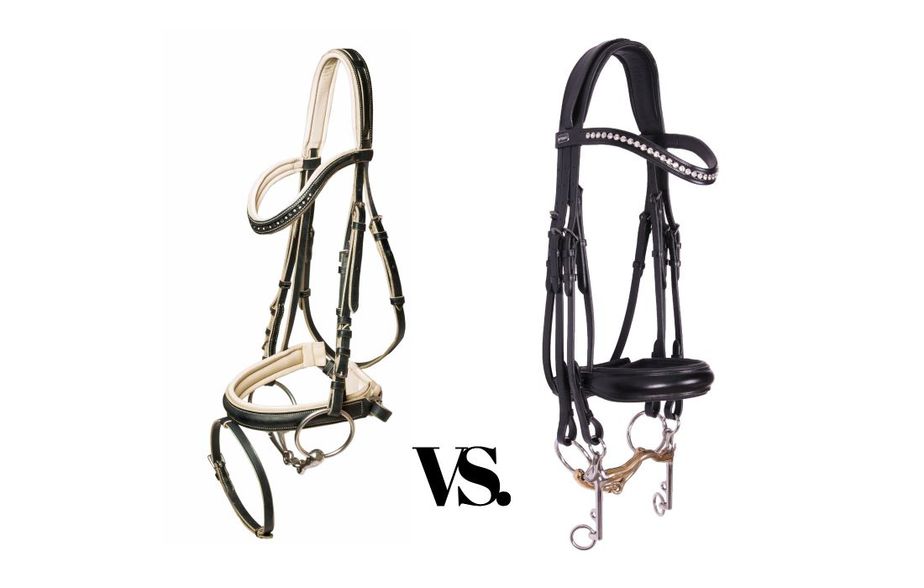

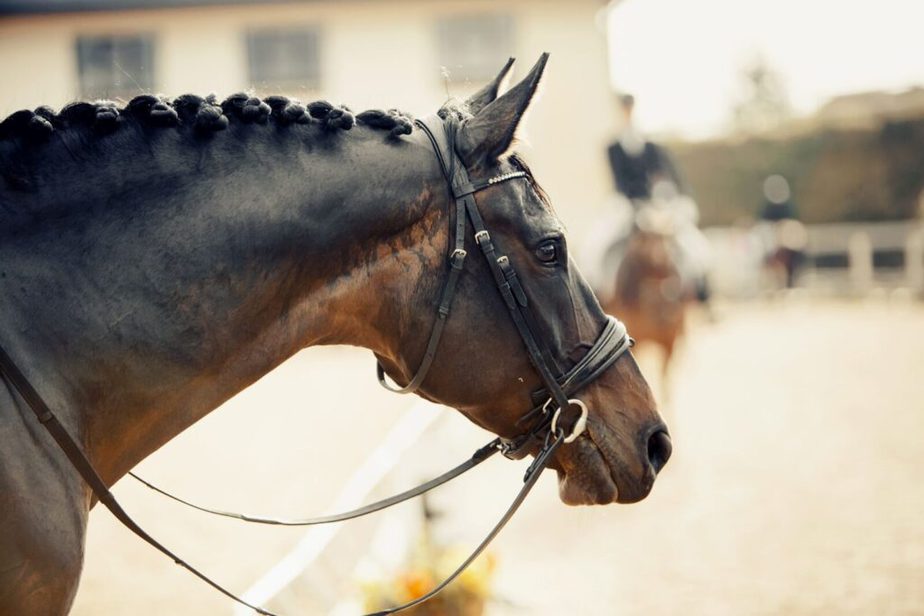
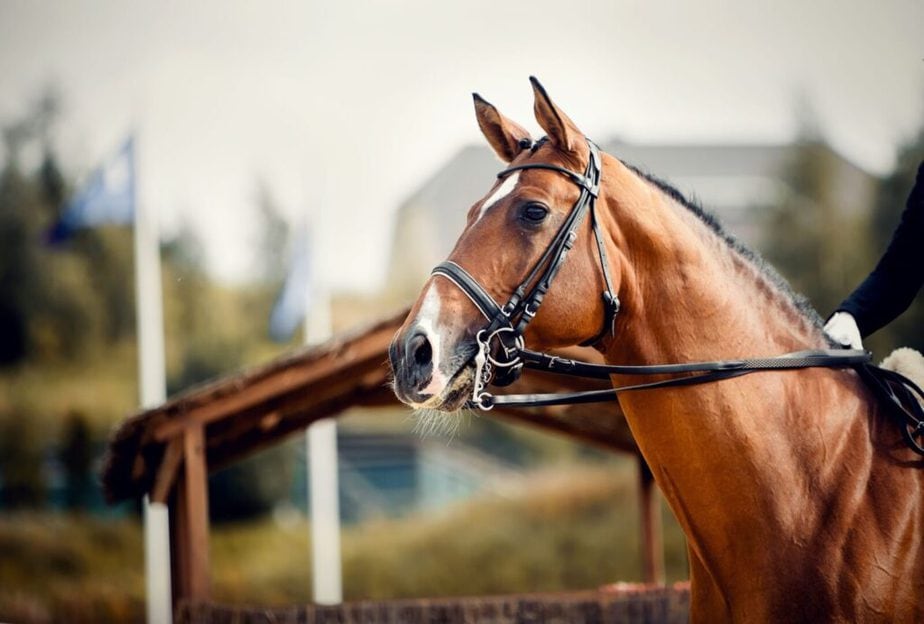
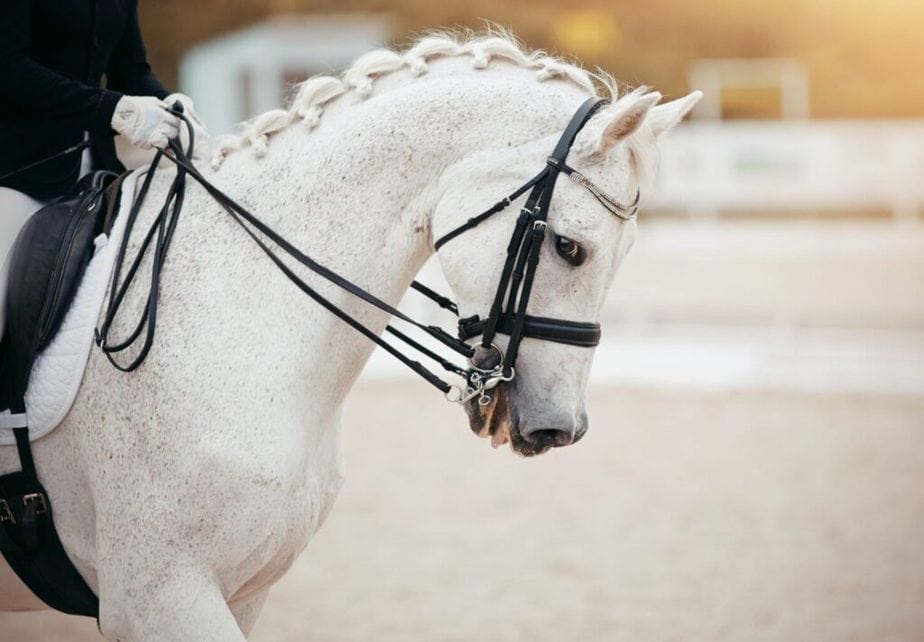
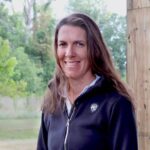






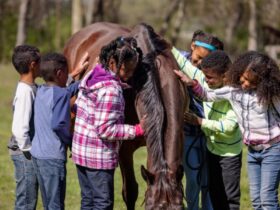
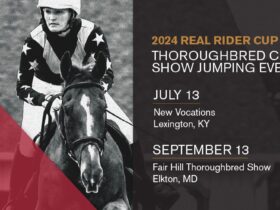

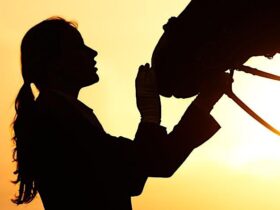
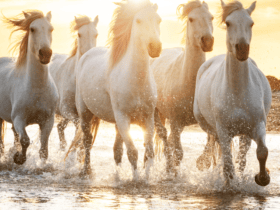

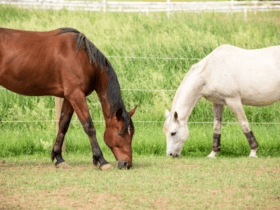
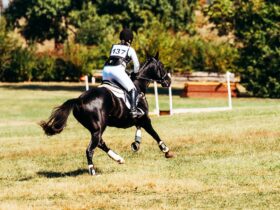


SOCIAL